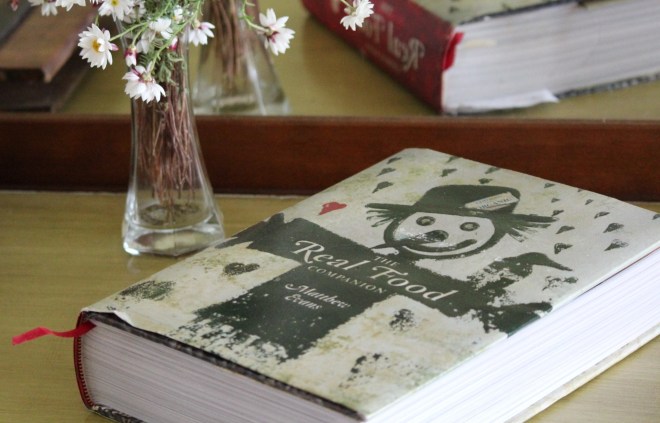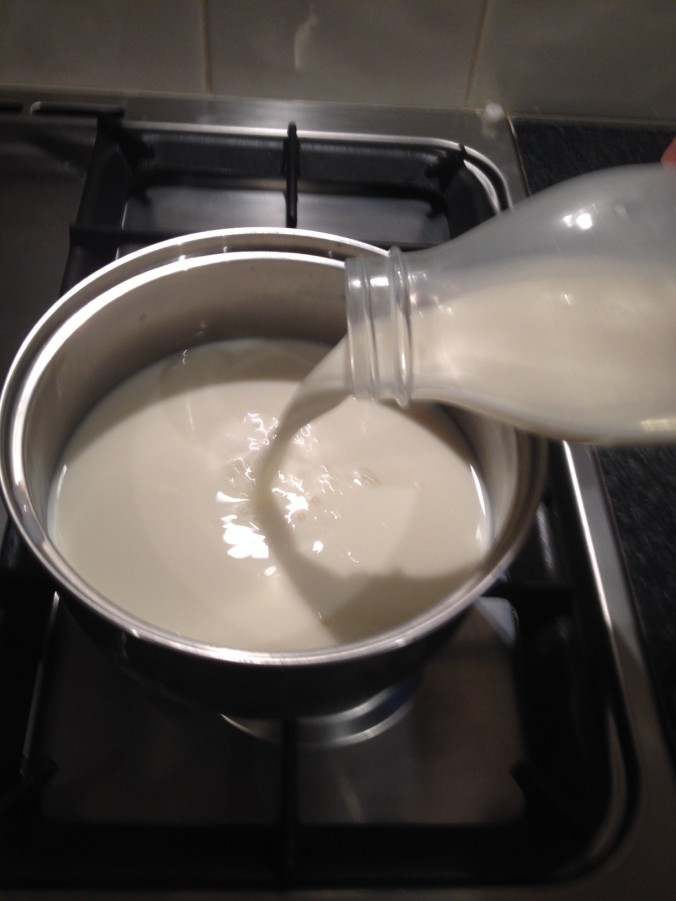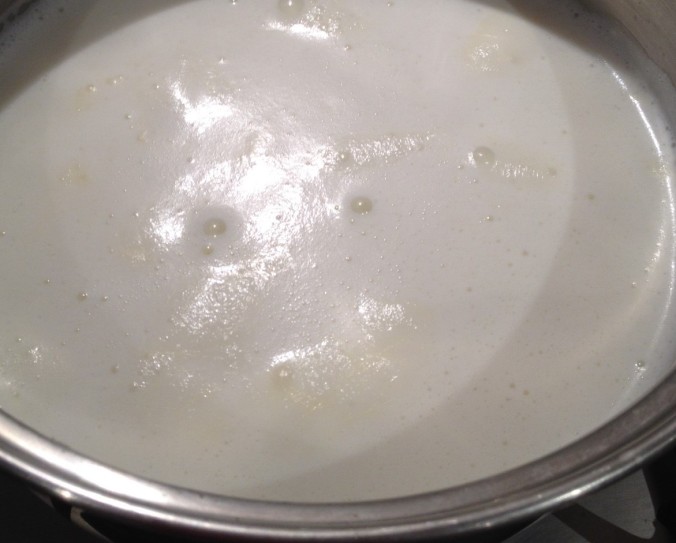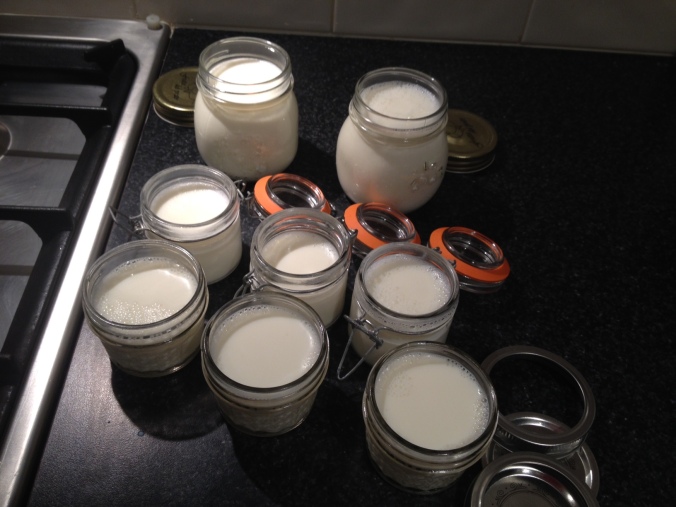I first started making yoghurt in June 2015 when I was thinking about how I was going to get through the Plastic Free July Challenge I’d set for myself – and therefore my family because I do all the shopping. My daughter was obsessed with yoghurt pouches, ‘drinking’ at least two a day and my husband often enjoyed a large tub of yoghurt. My son and I weren’t really fans of yoghurt.
One of my main aims during the challenge was to find plastic free alternatives to everything we already ate and used around the home. I knew that if I started forcing other family members give up things they enjoyed I wouldn’t stand any chance of success or lasting change. So yoghurt was one of the things I had to figure out.
In the beginning, there was no yoghurt for sale in glass in my region, so I decided to make it myself. The good thing about homemade yoghurt is that it is so easy and tastes so good! Even I enjoy yoghurt now (my son still won’t let yoghurt near his lips to figure out if he likes it or not). I think it is because I get to use fresh, raw, full-cream milk. I also really like that I didn’t have to buy anything extra like a yoghurt maker or kitchen thermometers.

To learn how to make yoghurt I pulled my copy of The Real Food Companion by Matthew Evans off the shelf and read the Dairy chapter with interest. I also found a video of Matthew making yoghurt which uses a slightly different method to that in the book; finally I tweaked the process to suit myself. This is how I do it, you will need:
- 1 litre full cream milk. If you are not able to collect your own milk in reusable containers (I can collect straight from a dairy vat), you might be lucky enough to find milk in returnable glass bottles. Butterfly Factory is a Gippsland brand of unhomogenised milk that comes in glass bottles. If you had access to package free milk powder from a bulk store you could experiment with this, but if plastic packaging is your only option, buy as large an amount as you can so that there is a less packaging to product ratio – make sure you don’t waste the milk.
- 80g natural plain yoghurt as a starter – choose one with a flavour that you like and check the label to ensure it only contains milk solids and live yoghurt cultures – no flavours, emulsifiers or thickeners. Remember to save a bit from each batch to make your next lot. After a while you may need to refresh your culture with another bought yoghurt. Again, you might be able to find some in reusable glass jars for your first starter.

Add one litre of full cream milk to a pan and heat until just before boiling. You are at this point when the milk starts to look frothy.

Turn off heat and let cool until you can leave your hand on the outside of the pan – it should still be warm. Stir in the yoghurt.

Pour into sterilised jars. I use jars of sizes suitable for school lunches, baking amounts and snacks. To sterilise jars leave in the oven at 120 degrees Celsius for 20 minutes.

Bundle the pots together, wrap in two towels and leave in a warm room overnight (about 12 hours). In the morning place in the fridge to cool and eat within two weeks.

As you can see from the picture I have some pink yoghurts. I added a drop of food dye to interest my daughter. Because the yoghurts she had been ‘drinking’ contained a lot of sugar, she did not initially like the change. I am slowly weaning her off the sugar in yoghurt by adding just enough to sweeten it up a bit. I add a little bit less each time, in the hope that she will eat it completely naturally in a little while. She will eat it without the sugar if I mix in berries before serving.
If you prefer a more detailed description of making yoghurt at home, you might find the Green Living Australia website helpful.
UPDATE April 2019:
As suggested in a comment below, I made yoghurt and mixed this with some homemade jam to make frozen yoghurt treats.

I’ve decided to buy a yoghurt making culture from Green Living Australia because it will save a lot of money and significantly reduce the amount of plastic or glass yoghurt containers I would have to buy to refresh the culture. So even though this comes with packaging the overall result will be much less packaging because the culture can make 100 litres of yoghurt.

This must be the year for 1st time yoghurt makers, I too sought the wisdom of Matthew Evans and was thrilled with the results.
Try using your yoghurt as an icecream base and add 1/4 cup of you favourite homemade jam to 1+ litre of yoghurt…Yum
LikeLike
Ah, thanks for the tip. Homemade Icecream is something I want to tackle soon. Do I need an Icecream machine?
LikeLike
I use my mum’s old Donvier ice cream maker, a manual relic of the 70’s, which makes great ice cream within 20mins🍨🍓
LikeLiked by 1 person
Hi Tammy
Ive just have ot a quick question about the original yoghurt as i make my own yogurt too. Where do you buy your original yoghurt from, all the natural yoghurt I seem to find are in plastic containers?
Also have you got Matthew Evans book about home preserving meats, fish, dairy etc-you would love it only i can’t remember the name of it-sorry.
LikeLiked by 1 person
No I don’t have that book but I’ll keep an eye out for it. Yes I can only find the starter yoghurt in plastic too. Apparently you can order cultures but I imagine the packaging would end up being just as bad. There must be away to start totally from scratch but I haven’t found it yet.
LikeLike
Have you got kefir grains? They make a yoghurt style culture with the consistency of cream but apparently they have much much more beneficial bacteria than yoghurt. The grains look like cauliflower but you just keep using them time and time again but you must care for them kinda like kombucha. I haven’t got any but one day when i have my own farm 😊 i think it would be a great asset.
LikeLiked by 1 person
Na, haven’t tried anything like that. I’m learning so much through this blog! Thanks.
LikeLike
Its great being able to share information 😆 and advice. xo
LikeLike
I went to your talk at Cheltenham Library in Melbourne tonight and I’m so glad I’ve found your blog! I’ve been wanting to make greek yoghurt for ages as I have it almost every morning with oats or in a smoothie – I’m sure it would save me some money as well as cut down waste! All other recipes I’ve seen make it sound way too complicated and science-y. Thanks for your help! Still trying to convert my housemate to the waste free life without being preachy – only been living together for 2 months but the plastic bags are driving me insane…
LikeLiked by 1 person
Thanks Bethany. Good luck with your housemate! 🙂
LikeLike